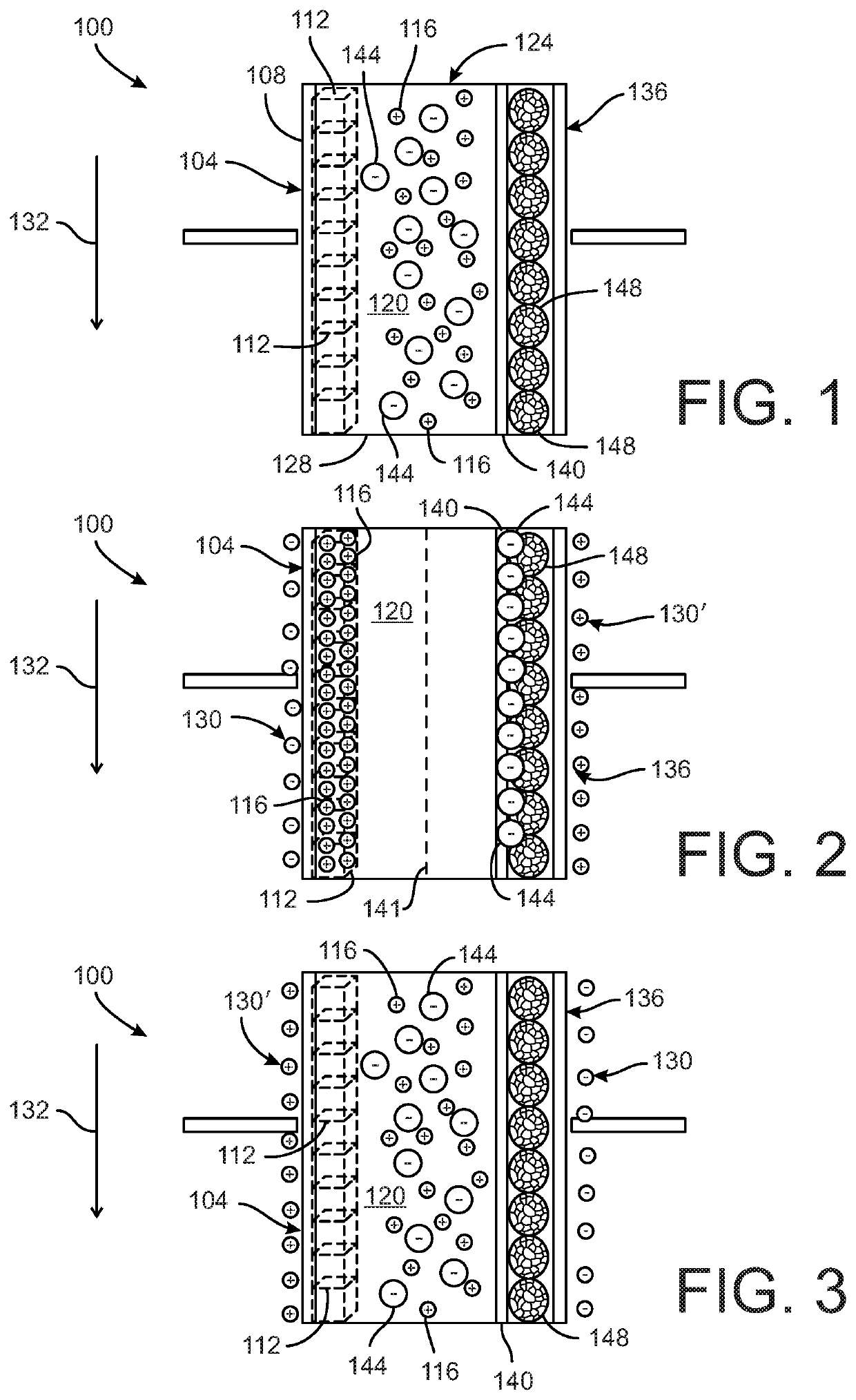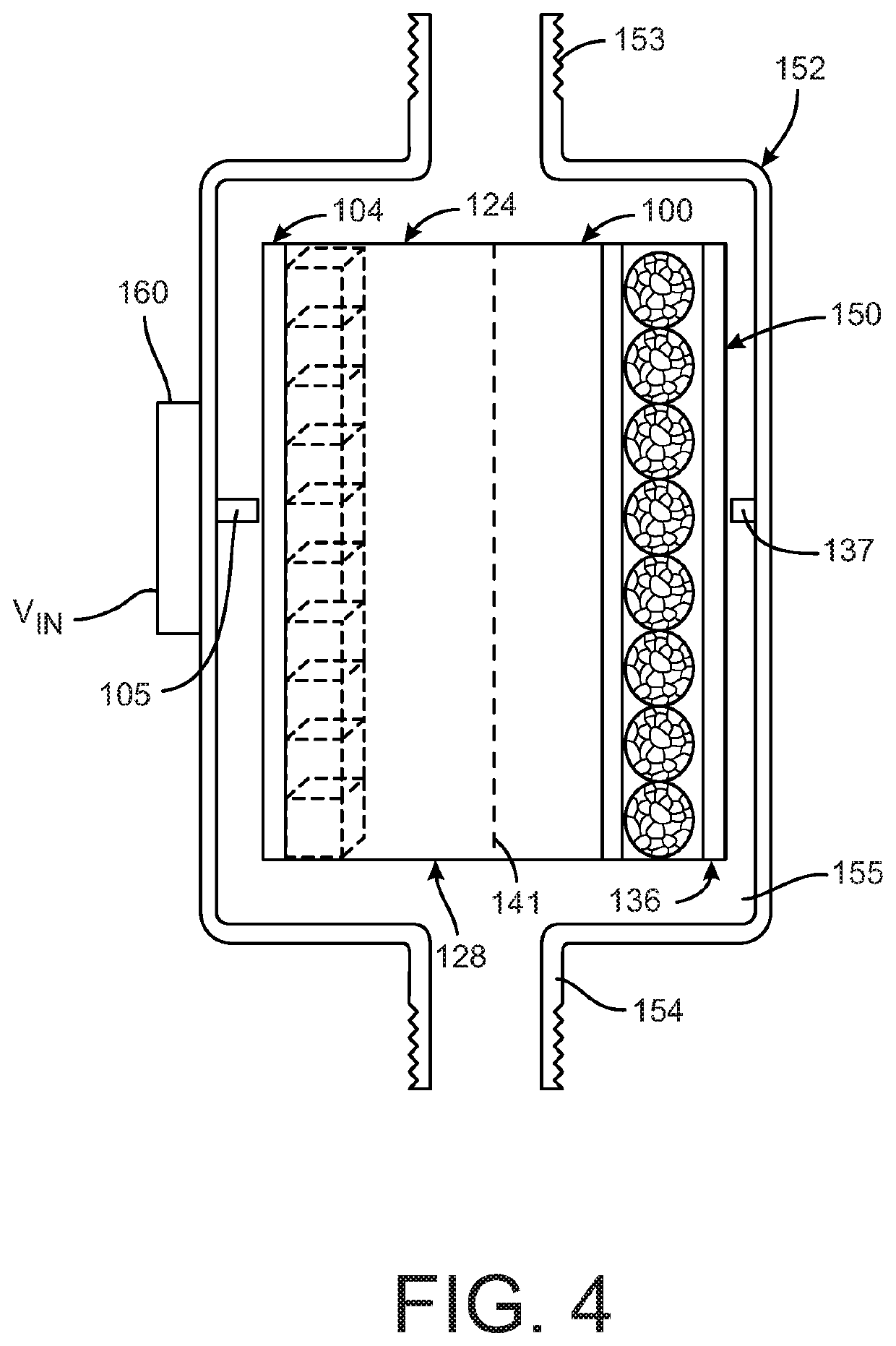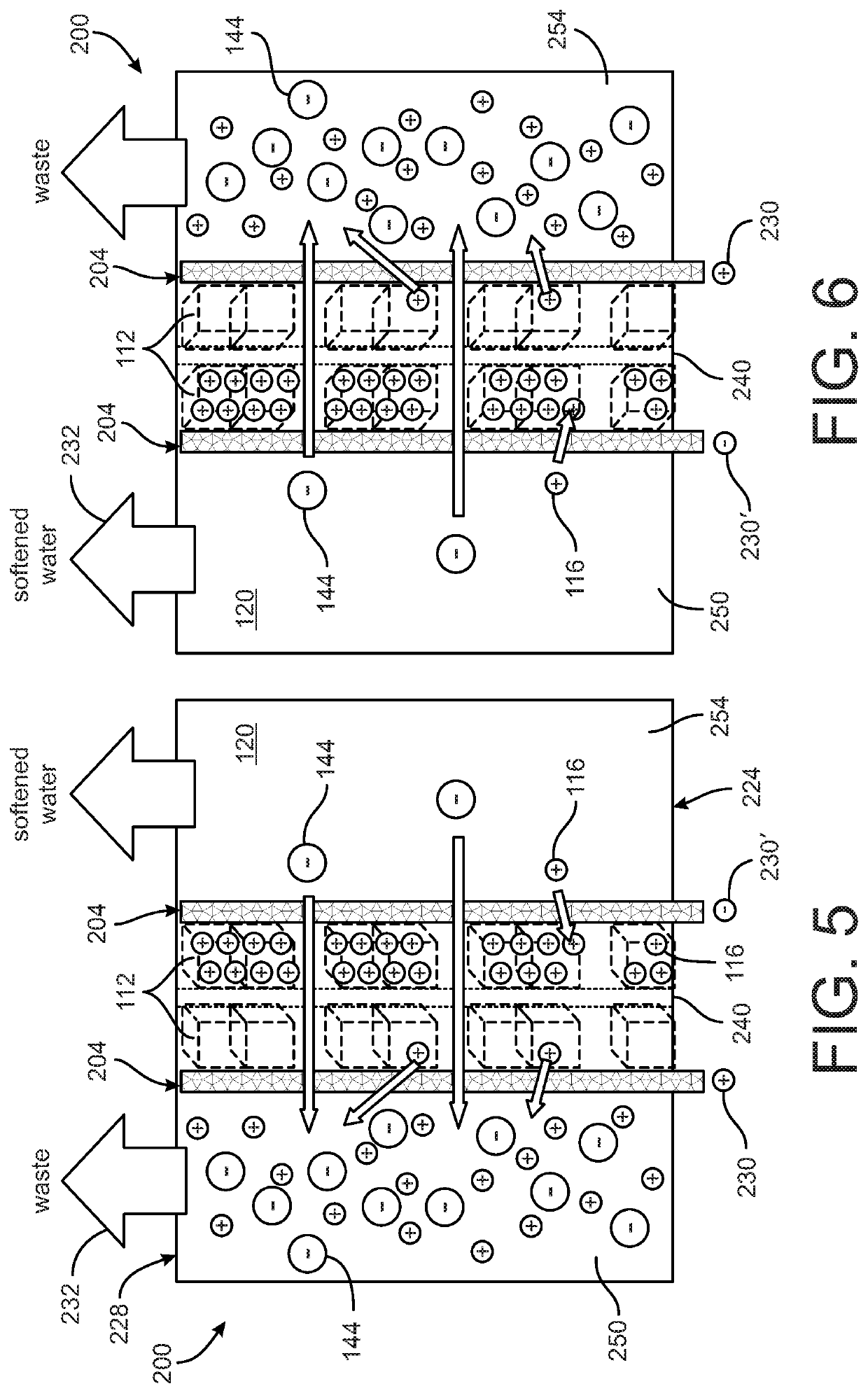Intercalation-Based Materials and Processes for Softening Water
- Summary
- Abstract
- Description
- Claims
- Application Information
AI Technical Summary
Benefits of technology
Problems solved by technology
Method used
Image
Examples
first embodiment
[0020]FIGS. 1-3 depict a device 100 for softening water. The device 100 includes at least one electrode 104 and a counter-electrode 136. The electrode 104 can have a substrate 108 with at least one material 112 disposed on the substrate 108. In one embodiment, the substrate 108 is a metal substrate. The material 112 on the substrate includes an intercalation host material configured to intercalate one or more first target ions 116 from a flow of water 120. In the illustrated embodiment, the intercalation host material 112 can be configured to intercalate with one or both of the divalent cations Ca2+ and Mg2+ as the first target ions, although in other embodiments the first target ions 116 can be other target ions. The water flow 120 can also include other cations and anions.
[0021]The intercalation host material 112 of the electrode 104 disclosed herein is one or more of the compounds identified in Table 1 below:
TABLE 1AxCuFe(CN)6, where A = Li, Na, K, Cs and 0 ≤ x ≤ 1AxMnFe(CN)6, wh...
second embodiment
[0035]FIGS. 5 and 6 depict a device 200 for softening water. The device 200 includes two porous electrodes 204 that are configured in essentially the same manner as the electrode 104 described with reference to FIGS. 1-3. Therefore, the two electrodes 204 of the device 200 each include the intercalation host material 112 (Table 1), which is configured to intercalate the first target ions 116 from the water supply 120. The device 200 further includes an ion exchange membrane 240 disposed between the two electrodes 204. The ion exchange membrane in the embodiment shown is an anion exchange membrane 240 that facilitates separation of the first target ions 116 into a first region 250 of the device 200 that is occupied by one of the electrodes 204 and a second region 254 of the device 200 that is occupied by the other of the electrodes 204. The anion exchange membrane 240 is configured to permit other ions, such as the second target ions 144, to freely pass through the anion exchange mem...
PUM
 Login to View More
Login to View More Abstract
Description
Claims
Application Information
 Login to View More
Login to View More - R&D Engineer
- R&D Manager
- IP Professional
- Industry Leading Data Capabilities
- Powerful AI technology
- Patent DNA Extraction
Browse by: Latest US Patents, China's latest patents, Technical Efficacy Thesaurus, Application Domain, Technology Topic, Popular Technical Reports.
© 2024 PatSnap. All rights reserved.Legal|Privacy policy|Modern Slavery Act Transparency Statement|Sitemap|About US| Contact US: help@patsnap.com










